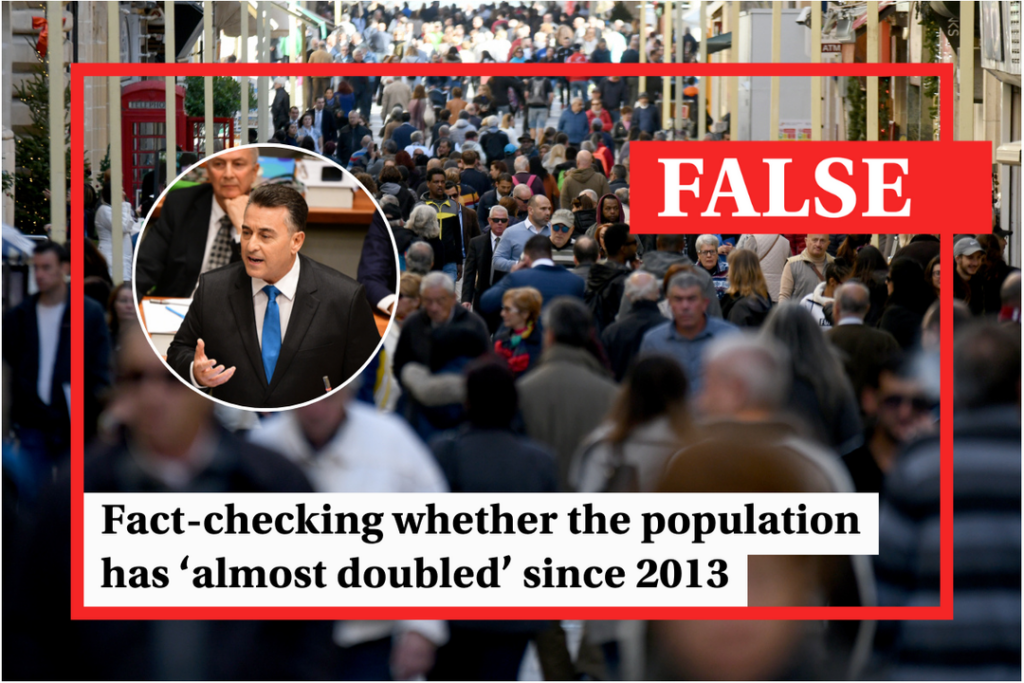Opposition leader Bernard Grech told Parliament on Wednesday 22 November that Malta’s population had “almost doubled” since 2013 when Labour Party was first elected to government.
“The population of our country has grown in an exaggerated way, to the extent that between 2013 and today it has almost doubled”, he said.
Grech was arguing that the increase in Malta’s population is having a negative impact on quality of life in Malta.
He went on to claim that official statistics are “hiding the true population of our country”, pointing to the fact that authorities catch small numbers of undocumented migrants living in Malta from time to time.
But is it true that Malta’s population is now almost double what it was a decade ago? And would these pockets of undocumented migrants have such a dramatic impact on Malta’s population?
How is population measured?
A country’s population is one of the most rigorously measured and documented statistical metrics for fairly obvious reasons – it is crucial for authorities to know how the population is changing to be able to develop policy and react to these changes.
Malta’s population is documented in the same way as it is in any other European country, using a wide range of administrative registers and databases, including those from public bodies such as health authorities, Identitá, JobsPlus, and others.
Population estimates are then published through regular updates issued through its National Statistics Office (NSO), as well as a census that is held every decade.
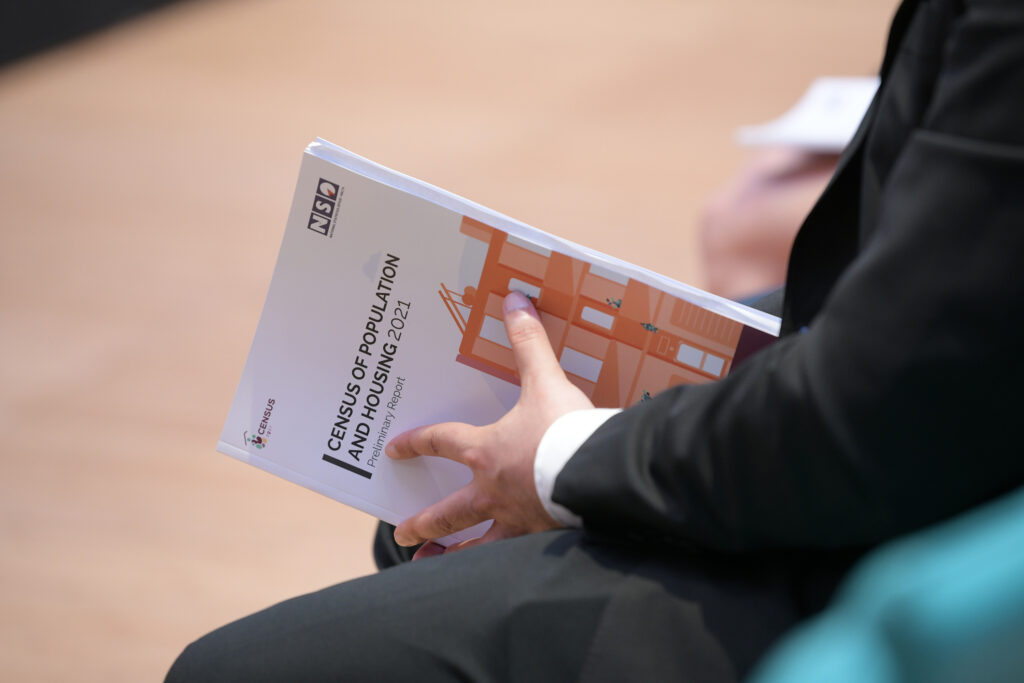
What does the census show?
The most recent census was carried out in 2021. It showed that Malta’s population had grown from the 417,432 recorded in the 2011 census to 519,562 a decade later.
This roughly 24% increase is comfortably the largest increase recorded in Malta’s post-war history. An even larger increase of just under 27% was recorded between the 1931 and 1948 censuses, but this was over a span of almost two decades.
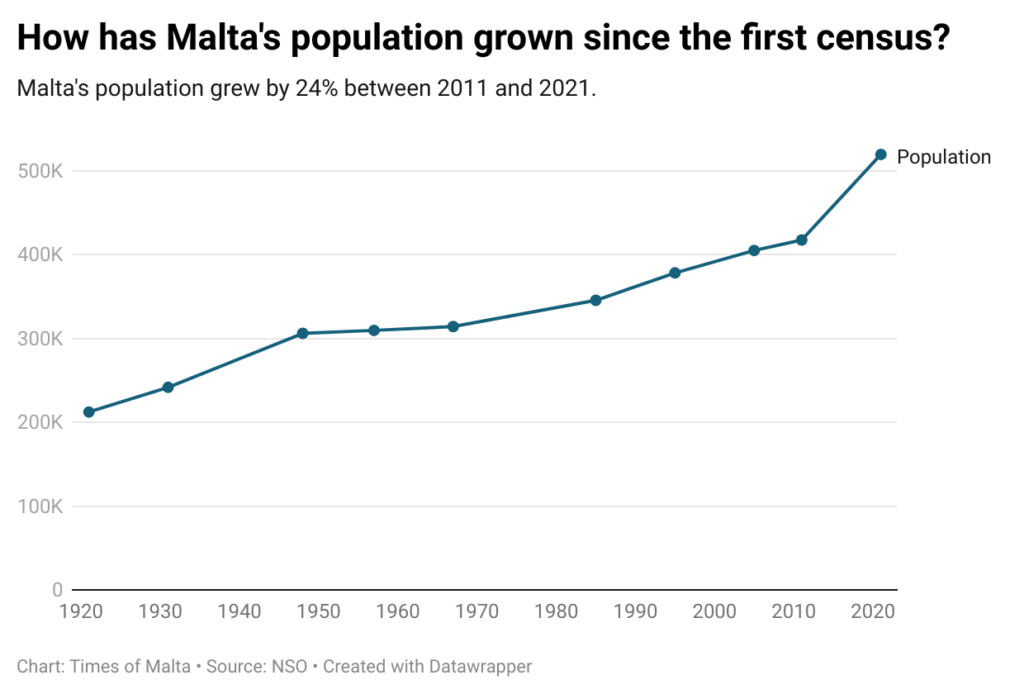
Nevertheless, the population increase between 2011 and 2021 is nowhere near having“almost doubled”, as claimed by Grech.
In fact, we need to go back almost an entire century to find a time when Malta’s population was half what it was in 2021, with the 1931 census showing that the population stood at 241,621.
What about more recent data?
Malta’s census data is now almost two years old and more recent population figures show that the number of people in Malta has continued to grow in the meantime.
According to the most recent population data available, published by NSO in July 2023, Malta’s overall population stood at 542,051 as of 31st December 2022.
This is some 26% more than a decade earlier, when Malta’s population stood at 429,424 in 2013 – a hefty increase, but still some 70% short of Grech’s claim.
Is EU data any different?
Not really, which is unsurprising, given that EU data is based on NSO figures.
In any case, Eurostat figures say that Malta’s population has grown from 422,509 in 2013 to 542,051 this year.
This makes it a jump of 28%, marginally higher than that shown by NSO, but still very far off from the figure claimed by Grech.
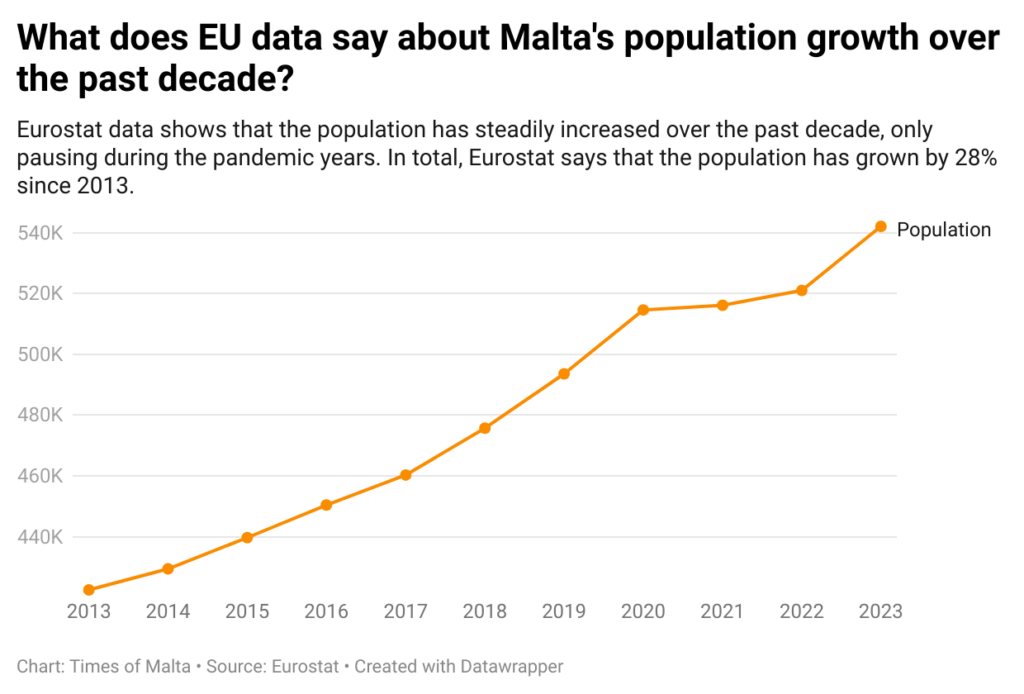
Ultimately, all data shows that if Malta’s population really were to have doubled since 2013, it would mean that there would be around 858,000 people living in the country today.
This is roughly 317,000 more people than Malta’s official population.
Could official data be inaccurate?
Perhaps, but certainly not to an extent that would make the claim true.
A degree of under (or even over) counting always exists in population counts and is generally considered to be a normal part of the counting process.
In fact, statistical bodies around the world, including Malta’s NSO, often return to previously published data to revise it once more accurate counts become available. But these revisions are always relatively minor and often almost insignificant, in the face of the bigger picture.
For instance, NSO recently revised its count for Malta’s 2021 population upwards by some 600 people, from the 519,562 listed in the census to 520,174.
This effectively means that Malta’s official population count for 2021 increased by a meagre 0.1% after the revision. Revisions for several other years show similar small changes.
Meanwhile, there’s no doubt that there are pockets of undocumented people living in Malta who are not captured by official statistics. However, there is nothing to suggest that the issue is as widespread as Grech says it is, nor that these groups have a dramatic impact on Malta’s true overall population.
Police announcements of immigration raids on social media and through press releases suggest that a little under 350 people were arrested for living in Malta illegally since the beginning of this year.
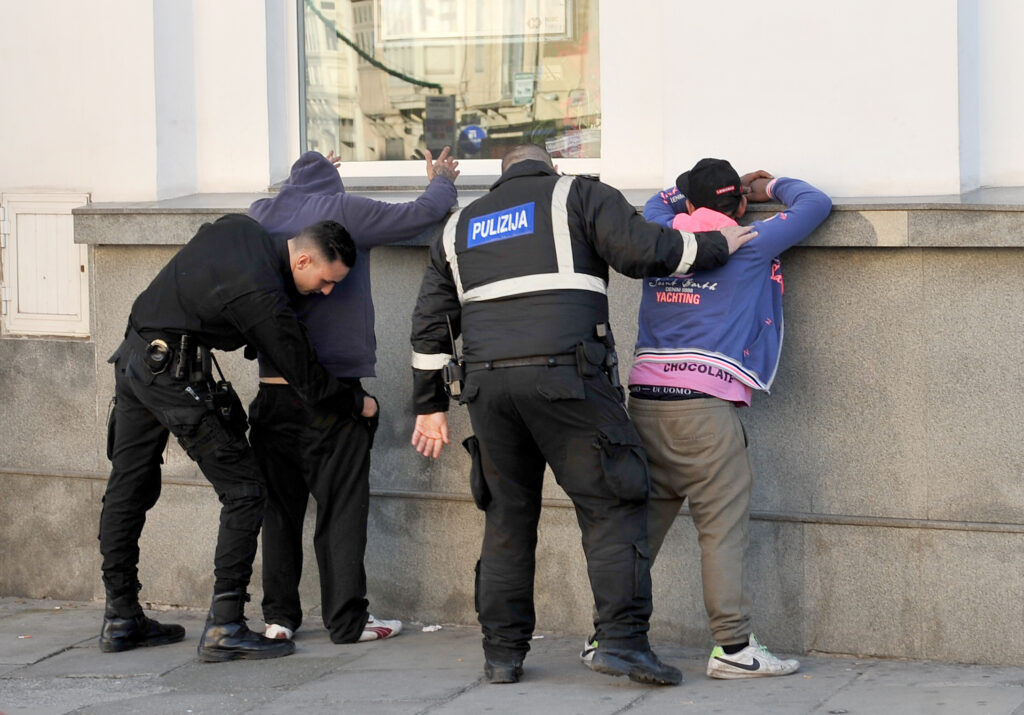
For Grech’s claim to be accurate, some 316,000 undocumented people – around eight times the total population of Gozo – would have had to evade the authorities’ sights, even if we assume that the police’s figures are extremely conservative.
Do Malta’s official statistics follow international standards?
Statistical bodies around Europe have to follow strict standards and methods when collecting all data, including data related to population.
This means that NSO cannot cherry-pick how it collects and presents its population figures, but must follow tried-and-tested methods also used by other EU countries.
Official statistics must also follow an internationally established code of practice, with experts from the European Statistical System regularly reviewing a country’s statistics and data collection processes to make sure that it meets the highest standards.
Malta’s most recent review took place a year ago, finding that NSO “demonstrates a high level of compliance with the European Statistics Code of Practice”.
NSO director general Etienne Caruana had previously told Times of Malta that Malta’s population estimates are in line with European legislation and guidelines for demographic and migration statistics.
Verdict
Malta’s population has seen its largest post-war increase over the past decade, growing by roughly a quarter since 2013.
However, the claim that it has “almost doubled” is wide off the mark. The last time that Malta’s population was half what it is today was around 1931, according to census data.
Although the presence of undocumented people living in Malta is a reality, there is no evidence to suggest that their numbers could drastically change Malta’s overall population figures.
Likewise, the claim that Malta’s official statistics are inaccurate appears to be unfounded.
NSO data is closely monitored and reviewed by European experts on a regular basis, with the most recent review held a year ago finding “a high level of compliance” with international standards.
This claim is therefore false, as the evidence clearly refutes the claim.
The Times of Malta fact-checking service forms part of the Mediterranean Digital Media Observatory (MedDMO) and the European Digital Media Observatory (EDMO), an independent observatory with hubs across all 27 EU member states that is funded by the EU’s Digital Europe programme. Fact-checks are based on our code of principles.
Let us know what you would like us to fact-check, understand our ratings system or see our answers to Frequently Asked Questions about the service.

